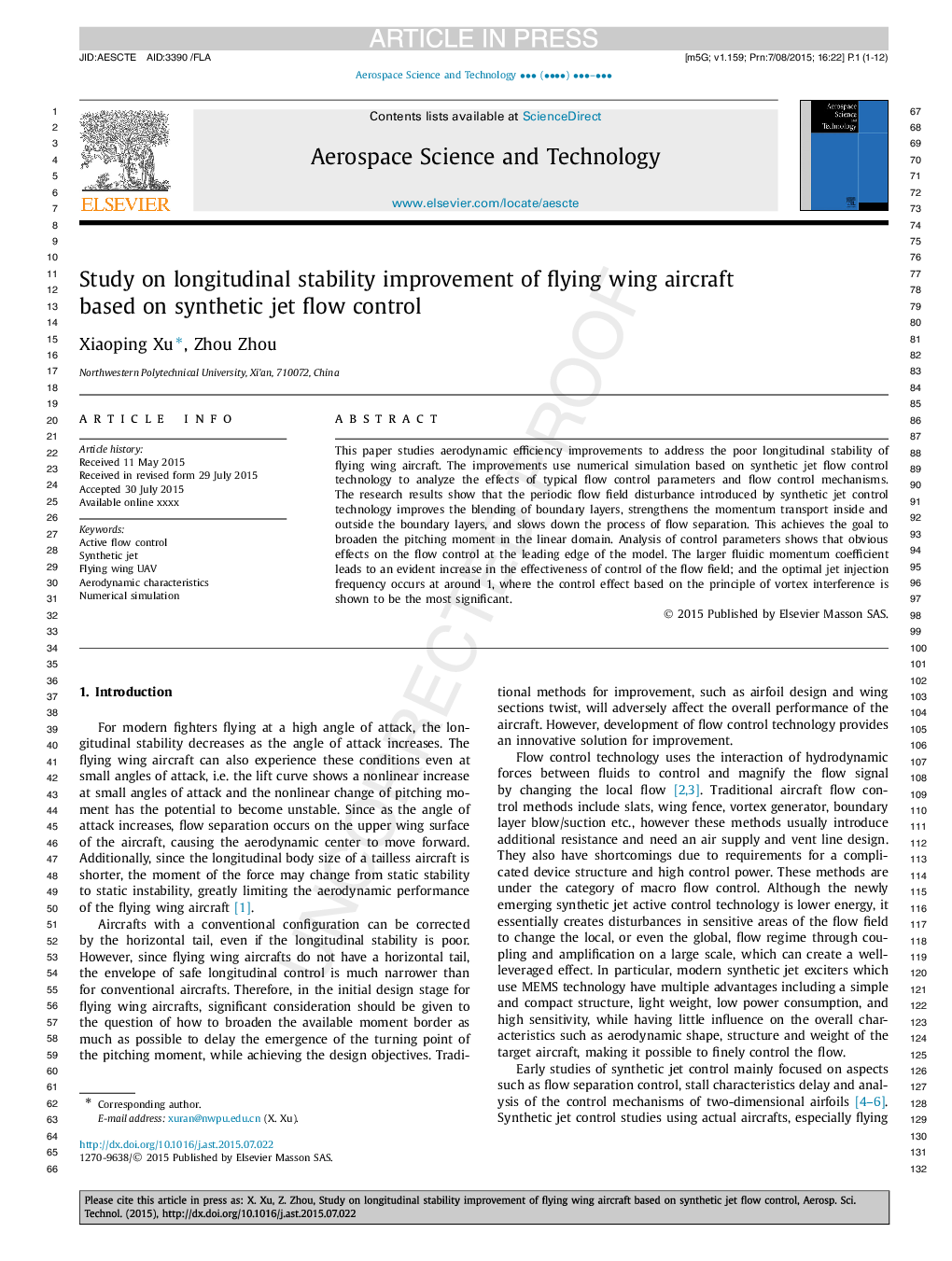| Article ID | Journal | Published Year | Pages | File Type |
|---|---|---|---|---|
| 8058858 | Aerospace Science and Technology | 2015 | 12 Pages |
Abstract
This paper studies aerodynamic efficiency improvements to address the poor longitudinal stability of flying wing aircraft. The improvements use numerical simulation based on synthetic jet flow control technology to analyze the effects of typical flow control parameters and flow control mechanisms. The research results show that the periodic flow field disturbance introduced by synthetic jet control technology improves the blending of boundary layers, strengthens the momentum transport inside and outside the boundary layers, and slows down the process of flow separation. This achieves the goal to broaden the pitching moment in the linear domain. Analysis of control parameters shows that obvious effects on the flow control at the leading edge of the model. The larger fluidic momentum coefficient leads to an evident increase in the effectiveness of control of the flow field; and the optimal jet injection frequency occurs at around 1, where the control effect based on the principle of vortex interference is shown to be the most significant.
Related Topics
Physical Sciences and Engineering
Engineering
Aerospace Engineering
Authors
Xiaoping Xu, Zhou Zhou,
